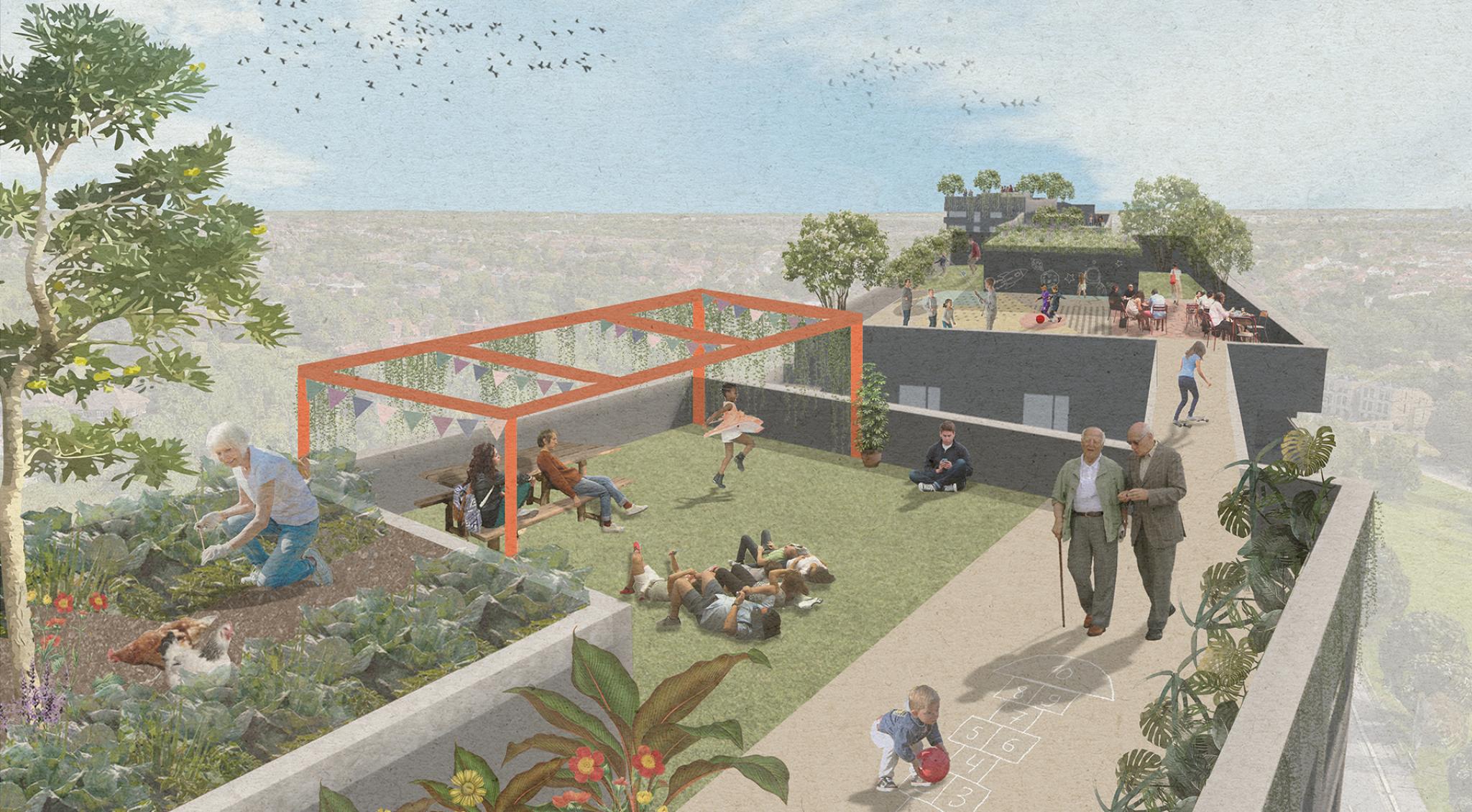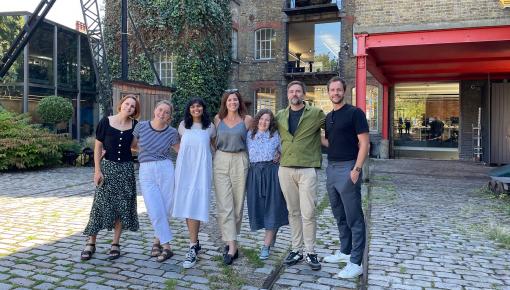London’s history is a richly layered narrative – one of urban resilience, spatial adaptation and a collective desire for its 8.7 million-strong community to prosper.
Bluntly speaking, however, the fallout of a global pandemic, mass urbanisation, shrinking housing markets and a snowballing climate crisis have exposed the social and environmental inadequacy of traditional city frameworks.
A turbulent world has drastically changed the way we live – and while people have remained fluid in the face of adversity, it’s imperative that city design supports this adaptive lifestyle. London needs solutions that place the entire city within arm’s reach, built for longevity and vitality for both citizens and the natural environment alike.
While it’s no stranger to ambitious and progressive approaches to open space, a major infrastructural overhaul is required to London’s urban assets (think streets, parks, waterfronts and rooftops) in order to accommodate for the future. Adopting a smart and flexible planning response and a catalogue of adaptive public domains ensures a vibrant, functional, and resilient London from the tube to the troposphere.
Developed within McGregor Coxall’s BioCity Research studio, a series of spatial typologies have been investigated that have the potential to support a new social and climate agenda to London. The first of these typologies is the rooftop and how an interconnected network of spaces in the sky, supporting urban agriculture, habitat biodiversity, rooftop events and sporting activities can be supported.
The question is: how do we get there?
A vision for London’s multifunctional roofscapes
As said crisis’ have highlighted, an increased importance has been placed on the final frontier of urban development in response to societal socio-environmental demands.
Representing 15 to 35% of a city’s total land area, rooftop landscapes – or roofscapes – could hold the key to social, economic, and environmental prosperity for highly urbanised areas. 2% of all urban rooftops are used, presenting the ultimate sandbox for experimentation with innovative housing solutions, sustainable food production, climate change adaptation, and new open space typologies. The demand for improved social space within our urban environments is leading to innovations in roofscape design, where a variety of programs are being catered for to engage residents and visitors.
In response to the growing challenges of climate change and the projected growth of city living, the roof is being re-imagined as a horizontal platform that can support a multitude of climate adaptation measures. From rainwater collection to brew beer, a dunescape that can enhance biodiversity net gain, and productive roof farms that support wildlife, herbs and vegetables, the roofscape could prove to be the difference in improving a city’s environmental resilience.
Around the world, cities are turning to roofscapes as a network of social and environmental spaces in the sky – capable of supporting programmes first thought unimaginable.
Denmark’s CopenHill (by Bjarke Ingels Group) is a roofscape optimised for all things fitness and outdoor, featuring a ski slope, hiking trails, running, climbing wall.
DeDAKKAS (by Craft) just west of Amsterdam is a sky-high café and greenhouse. Visited daily, it offers a broad range of activities from yoga, child-friendly activities, and an open-air cinema.
Belgium’s Bigh Farm (by ORG architects) hosts 2000m2 of high-tech greenhouse and productive outdoor food gardens on the top of the local Foodmet Market Hall.
Rainbeer (Hemelswater) employs rooftops to act as a conduit for rain, guiding it throughout a bacterial filtration system where it is boiled, purified, and brewed into beer.
Finland’s Amos Rex Art Museum (by JKMM) adopts undulating light wells and community programming to establish a playscape for all ages, inviting visitors to peek inside from above ground.
Rooftop Cinema Club, USA has turned nine unused spaces into a worldly destination for (nearly) everyone’s favourite past time: the movies.
Cities like London are in transition – continuing to adopt smart and flexible blue & green infrastructure responses that optimise these premium urban spaces. McGregor Coxall’s recent endeavours with Transport for London (TfL) align to the city’s commitment to carbon neutrality, detailing environmental and socially conscious roofscape strategies supported by thorough research of London’s skyward neighbourhoods.
Repurposing 5000m2 of rooftop, our concept scheme conserves and generates energy, manages rainwater, creates space for biodiversity and space for people to play and meet in. Residential buildings are interlinked through green rooftop bridges, presenting an urban farm, solar panels, open-air cinema, outdoor seating, raingardens and play spaces. Opposing the centrally placed parkland, public space, and London Loop Bridge connection lies a rooftop plaza, urban forest, and sports and recreational zone. Panoramic city views are an added bonus.
Think about the untapped potential where a green roof and solar panels are the dominant function.
What if this space could be balanced to support social programs or small-scale schools for the living community? What if the spaces could be connected establishing a unified roofscape park across multiple structures?
Where to from here?
As this generation of city shapers, it’s our duty to reconcile our city’s past with the needs of the future. With the strong foundations of an intuitive public realm, London’s rooftop Shangri-La is merely inches away.
OTHER NEWS
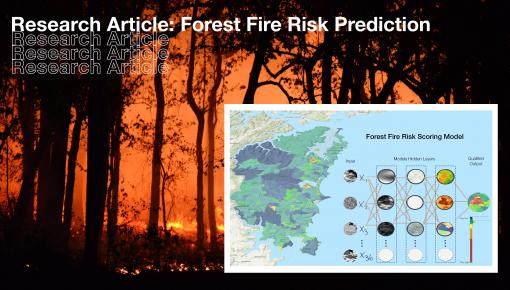
Insights
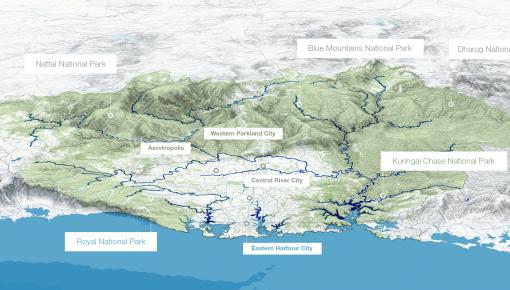
Insights
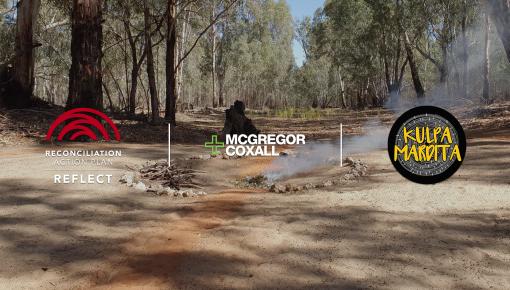
Insights

Media
